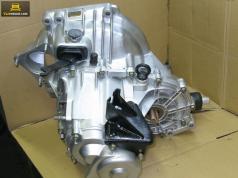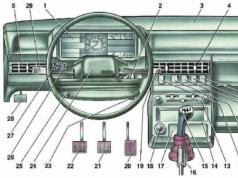When faults appear, the repair of the VAZ 21099 injector will not cause special problems, because its engine control device is the simplest, and if it is disassembled in it, there will be no difficulties in identifying problems and eliminate them. For some drivers who are accustomed to ride on old carburetor cars, an injection injection system may seem like something very complicated, in which to understand only specialists. But this is not the case, the system is extremely simple and understandable.
Repair of the VAZ 21099 Injector, in most cases, can be carried out in garage conditions, as well as the repair of any other VAZ brand cars. The difference in the carburetor from the injection nine is only that instead of the carburetor, an electronic control unit (ECU) is used, several sensors that give signals to the block and nozzles to which the ECU gives a signal and controls where and how much gasoline can be supplied to the combustion chamber. Also in the injector power system there is a receiver, fuel ramp and electric fuel pump. Consider the most common problems of injector injection on a vase and how to eliminate them.
Sensors and their functions
In control of the VAZ car engine, several sensors are involved, which must be working, otherwise there will be problems with stable operation of the motor. Sensors that are used by AvtoVAZ are quite simple, compared with foreign cars, therefore quite reliable, if they are original. The concept of what and how it works will noticeably simplify the search and solving problems. On the 99th, such sensors are installed:
- Mass flow sensor air (DMRV). This sensor is installed immediately behind the air filter housing, and its task is to consider the amount of air entering the receiver. Based on the resulting amount of air, the ECU calculates the amount of fuel, which must be submitted to the combustion chamber to maintain the correct proportion of gasoline / air;
- Crankshaft sensor (DC). It is located at the bottom of the engine block, near the crankshaft pulley. His task to read the position of the crankshaft so that the ECU knows when the pistons are suitable for the VTC for fuel injection;
- The throttle position sensor (DPDZ). Installed on the throttle node. His task to give the computer information about whether it is closed or open and how open is the throttle. Based on the data obtained, the controller calculates the desired amount of fuel;
- Idle regulator (RXX). The sensor is placed on the throttle node, at the bottom. It is designed to maintain idle and make them elevated in case of heating;
- Detonation sensor (DD). It is placed on the engine block, slightly below the candlestones. When detonation appears in the motor, this sensor works and the ECU adjusts the ignition angles to not harm the engine;
- Oxygen sensor (DK). The sensor is installed in the exhaust pipe, in the "pants". It monitors the amount of oxygen in the exhaust and gives data on the quality of the mixture if it is rich or poor, the computer corrects it to a normal relationship according to the testimony of DC.









